Aurora Garrison | February 2018
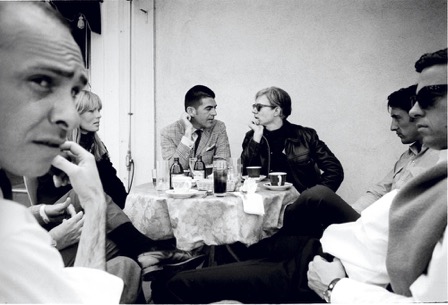
Irving Blum’s most ingenious decision in 1962 was purchasing Warhol’s original set of 32 Campbell’s Soup Cans for $1,000, displaying them at his Los Angeles Ferus Gallery, and introducing West Coast to Pop Art and Warhol.
It was a bold move by Blum on two accounts. First, Warhol’s 1962 solo exhibition was the first introduction of the newly-emerging Pop Art heralded by Warhol on the West Coast. Blum was the first art dealer on the West Coast who took a chance with Warhol when no one understood his artwork.
Blum hosted Andy Warhol’s first show as a fine artist. It was a chance Blum felts was well worth making. Although a New York-based artist, Blum visited Warhol at his apartment on Lexington Avenue that doubled as a studio. Blum went to see Warhol on the suggestion of Ivan Karp, the associate director at the Leo Castelli gallery and an early supporter of the Pop art movement. Blum describes the first time he saw the Campbell’s soup-can canvases in 1961:
“I walked down a corridor and there were paintings of soup cans on the floor, leaning against the wall. I said, ‘Andy, what are those?’ He said, ‘Oh, I’m doing these now.’ And I said, ‘Why more than one?’… He said, ‘I’m going to do 32.’ I simply couldn’t believe it. I said, ‘Why 32?’ He said, ‘There are 32 varieties.’”
Blum was so impressed with the emerging artist and his vision, he offered Warhol at show at his Ferus Gallery. Blum knew the up-and-coming artist had no representation in New York.
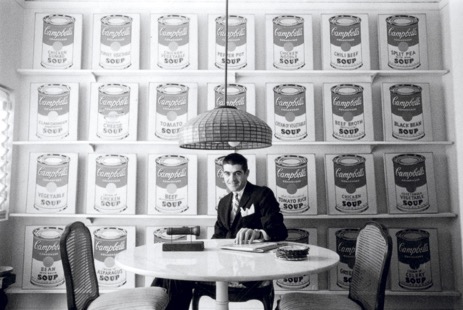
Blum recalls asking Warhol, “What about my showing these soup can paintings in L.A.?” He hesitated. Blum said, “Andy, movie stars come into the gallery” [A complete lie at the time]. Shortly after, Warhol had his first show of the 32 Campbell’s Soup paintings in LA, July 1962. By the time the show ended, Blum had sold four or five but had not delivered them, and had the idea of keeping them all together.
When he asked Warhol about the idea of keeping them as a set, Warhol said, “’I’d love that, they were conceived as a series.” Warhol then asked Blum to promise him that the series would always stay together. Blum proceeded to call collectors, and was able to keep them together. (Interview with Peter M. Brant, Interview Magazine, April 19, 2012).

the Collection of the Andy Warhol Museum, Pittsburgh.
Blum sent Warhol $100 a month for 10 months to pay him for the 32 Campbell’s Soup Cans. And for thirty-four years later the art dealer kept his promise to Warhol that the series would stay together. It was not until 1996 that the soup can paintings were acquired by the New York City’s Museum of Modern Art for $15 million in a partial sale, partial gift arrangement by Irving Blum.
Blum was one of LA’s first successful contemporary art dealers in the 1960s. Working out of his Ferus Gallery, he promoted up-and-coming contemporary LA artists, such as Ed Ruscha, Craig Kauffman, Larry Bell, Ed Moses and Robert Irwin. Blum effectively bridged the contemporary work of artists from the East and West Coast, selling works from New York pop artists like Warhol, Roy Lichtenstein, Frank Stella, Donald Judd and Ellsworth Kelly alongside contemporary LA artists.
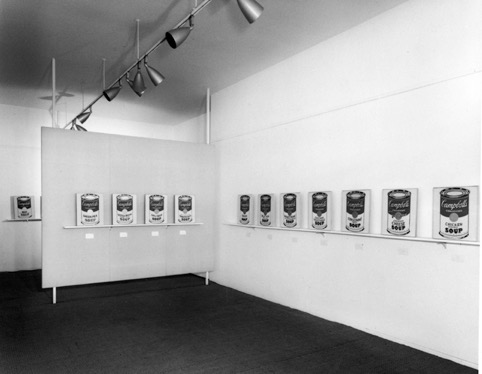
The exhibition displayed the 32 canvases, each measuring 20 by 16 inches, with one for each flavor of soup manufactured by Campbell’s at that time.
Uniquely, Blum placed a ledge beneath the 32 Campbell’s Soup Cans because he was having difficulty making the paintings appear level. As a result, small white shelves ran along the perimeter of the gallery, intimating the shelves of a grocery store. Later, when asked about this installation, Blum said, “Cans sit on shelves. Why not?” (Interview Magazine, 2012).
The Campbell’s Soup Cans canvases are a remarkable series in that they are some of Warhol’s earliest paintings based on American consumer goods and are some of his last hand-painted works. Soon after completing the Soup Can series, Warhol discovered silkscreen, allowing him a mechanical and commercial process to reproduce his work. Silkscreen enabled Warhol to make a countless number of exact reiterations of his favorite subjects like the Campbell’s soup cans.
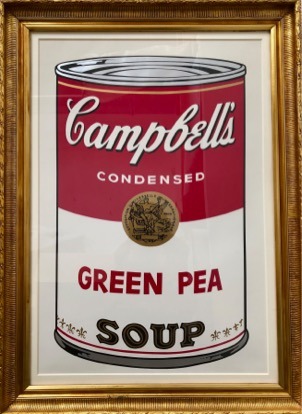
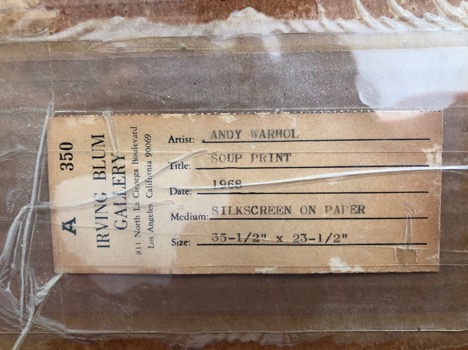
After the 1962 show, Blum became the primary dealer for Warhol’s Elvis’, Marilyn’s, Liz’s, and other iconic artworks until the end of the 60’s. Paintings like Campbell’s Soup: Green Pea, 1968, can be traced back to its original sale from Irving Blum’s Los Angeles Gallery.
Campbell’s Soup: Green Pea, 1968, is fascinating because of its incredible provenance and history with Irving Blum’s Los Angeles Gallery. Green Pea, 1968 was first sold by Irving Blum to its one owner in 1969, and has stayed with the same owner until now. Revolver Gallery recently acquired the piece in pristine condition – as it has not been handled since 1969 – and remains in its original frame with an Irving Blum Gallery sticker taped to its back.

